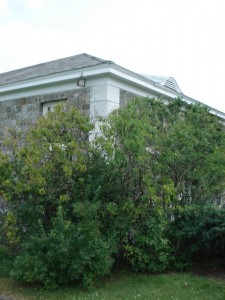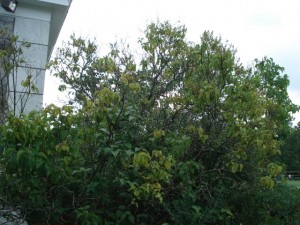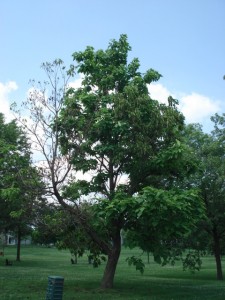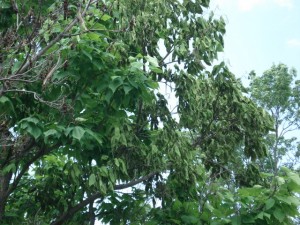My most depressing year at the University of Vermont would have been my junior year. All plant and soil science majors took Plant Pathology that year, two semesters worth. For all of you non-science plant geeks, plant pathology deals with diseases of plants-basically anything except insects. Virus, fungi, bacteria, even abiotic problems were addressed. After a year of learing the various ways plants die, I remember thinking about the hopelessness of it all, wondering how on earth plants even existed.
Insect pest management was the previous year. Insects, while a pain, can very often be sprayed, attacked by other bugs, or even crop rotated away. But most of plant pathology? Hopeless. At best, they are “controlled”, like most fungicides, at worst, well, here’s a list of plants if you have to replant that may not get that disease. No magical sprays, potions, or elixirs to help you along. Often the best defense against many of these problems is simply a good offense-a healthy thriving plant will suffer some little indignities here and there, but will fight on.
The recent spate of warm and wet weather has Verticillium Wilt rearing its nasty little head around. I’ve gotten several emails about it recently, and am expecting more. Verticillium Wilt is a soil borne fungus that enters the roots, then both produces toxins and spreads spores throughout the xylem (water tissues) of the plant. The plant, in a bit of idiotic self defense, uses various compounds to plug the xylem further, ostensibly to stop the spread of the fungus, but further restricting water movement inside. The name wilt is a descriptive, as the first symptom typically seen is the last, as the leaves wilt and die from lack of water.
In fruit trees, the fungus is called Black Heart, commonly seen in Apricots, but is also seen in many types of plants, such as potatoes, tomatoes, mint, and many types of trees and shrubs. The fungi, Verticillium albo-atrum or V. dahliae, can persist in the soil for up to 15 years, forming small black resting structures activated when roots grow near them.
On campus, Verticillium wilt is evident on some older plantings of lilacs, like on the picture below. This particular clump is near Battell, on the wetter, or beach, side. Lilacs don’t like wet feet (roots) to begin with, and this may help bring about the fungus.
Another victim of Verticillium seems to be a Catalpa, know by my kids as the Green Bean tree, for the size seed pods it produces. Spectacular in flower, this tree was the subject of my first Twitter picture about a month ago. (Are you following Middland on Twitter? I’m having a blast posting pictures of plants in bloom around campus, I’m at http://twitter.com/middland.)
The location is directly across from Emma Willard, blocking one of the special sightlines at Middlebury, that of the view from the front of Emma Willard looking up towards Old Chapel. While I mourn the loss of all trees, more than one person has lamented the unfortunate planting location of this tree, wishing it were elsewhere. This loss is particularly wrenching for me, as I watched it come down with this disease last year, but then watched it leaf and flower out again this spring. Thinking Verticillium more quickly virulent, I had false hope this spring, and now know better. Fortunately, the next nearest tree is a birch, resistant to Verticillium, so this loss should be confined to a single tree.



